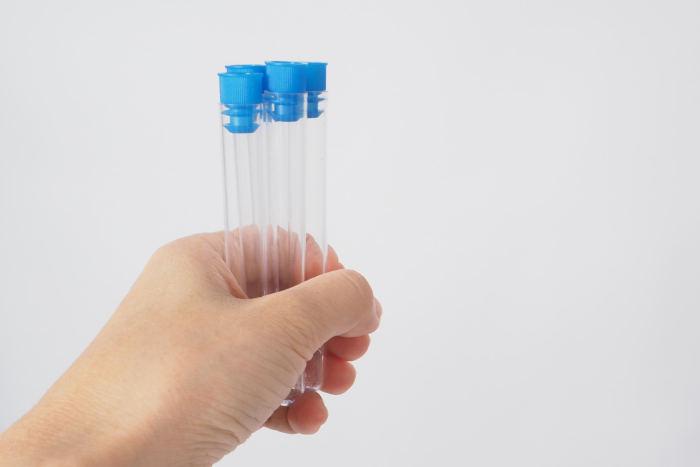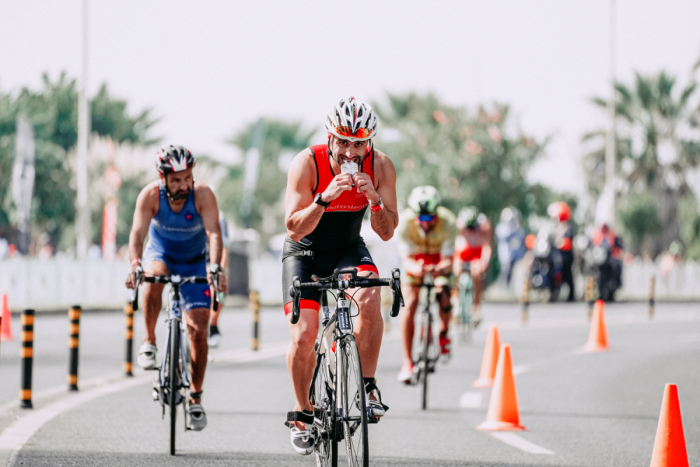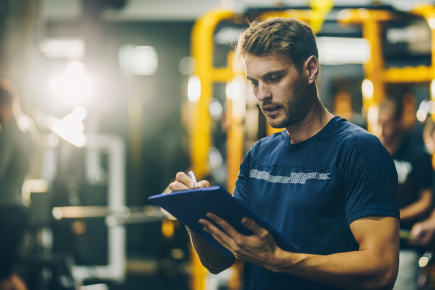Your energy budget: importance, monitoring issues, and the doubly labeled water solution
07/12/2023
Share this post

To be an athlete in the age of technology–it’s great, right? Having the ability to obtain copious information about yourself constantly has been a game changer for many. From wearables to blood tests, there are endless ways to find out how your body is functioning throughout your training. However, one metric that has been historically hard to pin down is your energy budget.
Energy budget is one of the most important metrics for athletes. Athletes fuel for performance. If you’re not fueling your training properly, you can experience plateaus or declines in performance, prolonged recovery, more frequent or severe injuries, etc.
Improper fueling becomes particularly dangerous in the case of extreme underfueling. Low energy availability and RED-S (Relative Energy Deficiency in Sport) are very real and have detrimental effects on athlete performance. Some of the key physical characteristics of RED-S are low energy levels, recurring or persistent injury/illness, performance decline, low libido, iron deficiency, and amenorrhea [1,18]. Psychological effects can be severe as well, including body dysmorphia, anxiety around food, anxiety between exercise/resting, and irritability/poor concentration/depression [1,18]. One of the biggest issues here is that there isn’t a real standard of measuring inadequate fueling or overtraining. Current screening methods rely on self-reported data, which is hard to track quantitatively, and is provided by athletes themselves, who tend to deny symptoms in order to ‘stay in the game’ [2].

So how are energy budgets currently kept in check?
Current processes rely heavily on wearables and tracking calories. BUT… we know that wearables are only so (in)accurate. For total caloric burn, they can be off by 30% at best (and 90% off at worst) [3,4]. We also know that it’s hard to track calories–most people are off by upwards of 30% [5]. In addition, there are no universal benchmarks for fueling because specific training needs are so individualized. When combined, all these uncertainties make it incredibly difficult to understand how much you are even currently fueling, let alone how much you should be fueling.
In other words: it’s hard to get accurate data about how much you’re burning, which makes it hard to fuel properly, which can lead to issues like low energy availability and RED-S.
Is there a better way to determine energy budgets?
Enter: the doubly labeled water (DLW) method. DLW allows you to quantify your metabolic rate, training level, and more.
How does DLW work?
The DLW method was discovered in 1949 by a group at the University of Minnesota and was validated in humans in 1982 [6]. It’s largest advantage compared to other methods that measure your metabolism? It’s a free-living test, meaning you can go through your normal routine (training, meals, sleep, etc.) without ever going to a lab or getting a blood draw. You can get the same accurate energy expenditure data as you would via indirect calorimetry (which requires you to live in a lab for a week) from the comfort of your own home (and gym, track, trail… you name it).

The test uses water ‘doubly labeled’ with special forms of oxygen and hydrogen to measure how much oxygen you turn into carbon dioxide (it’s literally just water; it’s 100% H2O). This process is called cellular respiration and occurs when your cells work (turn food into energy). The DLW method measures how much work your cells perform over the course of the test. You can think of it as a sensor measuring the amount of exhaust coming out of a car to measure how much fuel it burns: a DLW test accurately measures the rate at which you burn fuel – your gas mileage.
Advances in academia in the last 30 years have made DLW more and more accessible. It wasn’t until the 1990’s that laser absorption spectroscopy was developed. Prior to these developments, mass spectrometry (commercially available since the 1940s) was used to make DLW measurements [7]. Many labs now use what is known as off-axis integrated cavity output spectroscopy (OA-ICOS). Developed in 1998 and expanded upon in 2001, OA-ICOS uses zig-zagging lasers to make DLW measurements [8, 9,10]. OA-ICOS is both sensitive and robust, which gives athletes tremendous confidence in the measurements being made [10, 11].
What is a DLW test capable of telling you?
Below is an overview of some of the most insightful metrics you can tap into from a DLW test.
• Daily Caloric Burn
This is the average amount of calories burned per day over the course of your test period. Every system in your body uses energy – your immune system, heart and lungs, kidneys and liver, your brain, and of course exercise and other physical activity. Also known as total energy expenditure (TEE), this is the total amount of energy that was required to power the ~37 trillion cells in your body during your test period each day. Your TEE is a measure of how your body is functioning, a peek into the hidden engine that powers your life. For more information about energy expenditure throughout your life, see Pontzer et al. 2021 [12].
• Energy Balance
This is the calories in (fueling) vs calories out (training) part of the equation that is so crucial for athletes. If the balance leans too much one way or another, it can affect performance dramatically.
• Calorie Intake by Objective
This is the breakdown of your burn and what level of calorie deficit/surplus is sustainable based on the burn measured during your testing week. For example, if your measured deficit is deeper than that at maximum safe fat loss, you’re at risk of a weight loss rate that sacrifices muscle mass and other functions necessary for sports performance and daily life.
• Complete Energy Budget
Your energy budget can be broken down into four main components:
-
Basal Metabolic Rate (BMR): Calories burned at complete rest. If your metabolism was a car, your BMR would be the engine at idle - the energy needed just to keep everything running. BMR is determined primarily by your energy-hungry organs (like the brain, liver, kidneys, and heart).
-
Thermic Effect of Food (TEF): Calories required to digest food.
-
Exercise: Calories exerted during your logged workouts.
-
Non-Exercise Activity Thermogenesis (NEAT): Calories utilized by non-exercise activity (e.g. work and daily life).
• Physical Activity Level
Physical activity level (PAL) is the ratio of your total caloric burn to your BMR and quantifies how active you are. A PAL of 2.5 has been demonstrated to be the upper limit of what is sustainable long term. For example, an ultramarathon runner may have a PAL of 10.0 during a race, but is only sustainable for the few days they are running [14]. If they were somehow able to keep that high of a PAL for weeks on end, they would likely experience devastating amounts of weight loss or severe injuries. For more information on TEE vs. PAL, see Pontzer et al. 2016 [13], PAL at the extremes, see Thurber et al. 2019 [14], and PAL and FFM throughout your life, see Westerterp et al. 2021.
• Energy Availability
Energy availability is defined as the number of calories you have left (after accounting for exercise and training) relative to your body size. More precisely, it is measured as non-exercise calories per kilogram of lean body mass. For more information on energy availability in athletics, see Melin et al. 2019 [16], energy deficiency in sports, see Stellingwerff et al. 2021 [17], and the Olympic Committee’s statement on energy deficiency in sports, see Mountjoy et al. 2023 [18].
• Training Sustainability
This is where you lie on the spectrum from completely sedentary to the maximum sustainable energy expenditure. A result of less than 100% indicates that you are training sustainably and have room in your calorie budget before you hit your upper limit (a PAL of 2.5). A result of greater than 100% may indicate overtraining. Also reported is your training horizon (i.e., how long you could perform that level of training before the scientific literature predicts you will get injured, get sick, need a vacation, or dial back your training to stay within a sustainable regimen). For more information on energy deficiency in sports, see Stellingwerff et al. 2021 [17].
• Body Composition
DLW provides body composition measurements of comparable accuracy and precision to a DXA scan [10] and can provide your lean body mass, fat mass, and body fat percentage, as well as your total body water.

How is DLW being used in athletics?
DLW is helping us answer questions about how bodies work at the extreme. For example, in September 2023, a paper was published using DLW during an ultramarathon event (the Cocodona 250, ~402 km race) in Arizona. Looking at 5 different elite and subelite athletes, the paper offers a look into what their body’s require during such a demanding event. Using DLW, they found that the athletes were burning 8,000 to 12,000 calories per day, meaning their PALs ranged from about 4.0 to 7.0. It’s difficult to fuel that much any day, but especially while in a race. One athlete reported they were able to fuel about 53% of what they were burning, meaning the remaining 47% of their energy came from burning energy stores around their body. This underscores the importance of fueling before, during, and after these endurance events [19].
In addition to investigating ultramarathon runners, DLW is being used to answer questions about metabolic limits, efficient and effective fueling, and more across a wide range of sports. From the NBA to top triathletes, cyclists, and runners, DLW is helping elites answer their most challenging metabolic questions.

Why hasn’t DLW been widely available before?
Until now, one of the biggest barriers to the test was the cost. In 1973, it was estimated that a DLW test cost 50,000 USD (400,000 USD today) for a 70-kg human [6]. Because of this high barrier to entry, the test has been confined to academia since its birth. It’s been used to answer questions about energy expenditure throughout lifespans, across species, in space, and more.
However, as of early 2023, DLW tests have been available through Calorify. Anyone can now access this gold-standard measurement without having to work with an academic lab or be recruited as part of a research study. Calorify provides results within 2 business days of receiving samples back at the lab, compared to the month (or year) turnaround times common in scientific studies.
Main takeaway?
Understanding your energy budget is incredibly important for athletes in order to fuel training, recover properly, and prevent injury. Until now, with DLW tests available to the public for the first time ever, it’s been hard to understand with great detail how your burn differs from others.
With a DLW test from Calorify, you can stop guessing and start measuring to better understand your burn. To learn more or purchase a kit, visit calorify.com.
References
[1] Project RED-S. What is RED-S? www.red-s.com/about
[2] Joy et al. 2016. 2016 update on eating disorders in athletes: A comprehensive narrative review with a focus on clinical assessment and management. British Journal of Sports Medicine.
[3] Fuller et al. 2020. Reliability and Validity of Commercially Available Wearable Devices for Measuring Steps, Energy Expenditure, and Heart Rate: Systematic Review. JMIR mHealth and uHealth.
[4] Shcherbina et al. 2017. Accuracy in Wrist-Worn, Sensor-Based Measurements of Heart Rate and Energy Expenditure in a Diverse Cohort. Journal of Personalized Medicine.
[5] Orcholski et al. 2015. Under-reporting of dietary energy intake in five populations of the African diaspora. British Journal of Nutrition.
[6] Speakman 1998. The history and theory of the doubly labeled water technique. American Journal of Clinical Nutrition.
[7] Griffiths 2008. A Brief History of Mass Spectrometry. Analytical Chemistry.
[8] O’Keefe 1998. Integrated cavity output analysis of ultra-weak absorption. Chemical Physics Letters.
[9] Paul et al. 2001. Ultrasensitive absorption spectroscopy with a high-finesse optical cavity and off-axis alignment. Applied Optics.
[10] Melanson et al. 2018. Validation of the doubly labeled water method using off-axis integrated cavity output spectroscopy and isotope ratio mass spectrometry. American Journal of Physiology Endocrinology and Metabolism.
[11] Reynard et al. 2022. Accuracy and Practical Considerations for Doubly Labeled Water Analysis in Nutrition Studies Using a Laser-Based Isotope Instrument (Off-Axis Integrated Cavity Output Spectroscopy). The Journal of Nutrition.
[12] Pontzer et al. 2021. Daily energy expenditure through the human life course. Science.
[13] Pontzer et al. 2016. Metabolic acceleration and the evolution of human brain size and life history. Nature.
[14] Thurber et al. 2019. Extreme events reveal an alimentary limit on sustained maximal human energy expenditure. Science Advances.
[15] Westerterp et al. 2021. Physical activity and fat-free mass during growth and later life. American Journal of Clinical Nutrition.
[16] Melin et al. 2019. Energy Availability in Athletics: Health, Performance, and Physique. International Journal of Sports Nutrition and Exercise Metabolism.
[17] Stellingwerff et al. 2021. Overtraining Syndrome (OTS) and Relative Energy Deficiency in Sport (RED-S): Shared Pathways, Symptoms and Complexities. Sports Medicine.
[18] Mountjoy et al. 2023. 2023 International Olympic Committee’s (IOC) consensus statement on Relative Energy Deficiency in Sport (REDs). British Journal of Sports Medicine.
[19] Best et al. 2023. Total energy expenditure and nutritional intake in continuous multiday ultramarathon events. International Journal of Sport Nutrition and Exercise Metabolism.
Comments
There are no comments yet.




